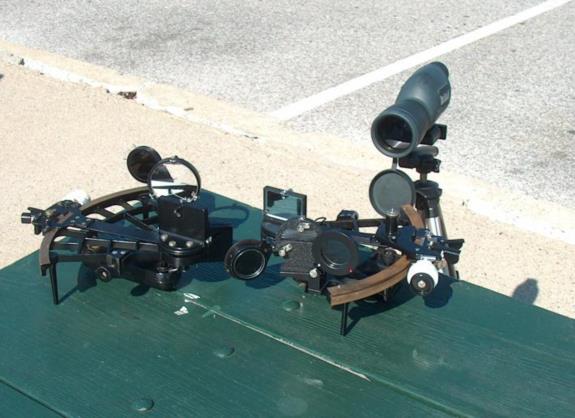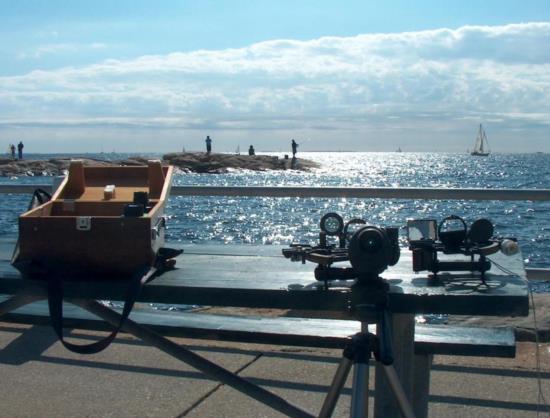
NavList:
A Community Devoted to the Preservation and Practice of Celestial Navigation and Other Methods of Traditional Wayfinding
From: Fred Hebard
Date: 2021 Mar 8, 12:15 -0500
On Feb 25, 2021, at 18:15, Frank Reed <NoReply_FrankReed@navlist.net> wrote:Yes, this could work well! I considered a kit like this some years ago. Unfortunately I couldn't find any inexpensive prisms with good optical qualities. But you know, instead of a prism, you could use a pair of mirrors in a solid mounting. In place of a set of prisms, you would have a set of pairs of mirrors at certain calibrated angles. One pair would produce a 15°-offset light beam. Another would produce 30°. Yet another 45° and so on. As you suggest, we could also have sets for micrometer eccentricty checks (for example, 5°10', 5°20', 5°30' etc.). And then... hey, why don't we mount one pair of mirrors on some sort of rotator so that we could cover many more angles?... Sure. We would have one fixed mirror and then another mirror on a rotating mount. A pointer of some sort would allow us to set the angle. Then you would place this calibrated source on a table so that its light "output" feeds into a sextant next to it. You can see where this is going...
In short, you can use a sextant to calibrate a sextant. Place a sextant with excellent calibration on a table looking at some distant target. Set it to any desired angle and output the light from its index mirror as input to the index mirror of the the sextant you're trying to calibrate. If the calibrated instrument reads 22° 17.5' (or whatever), then the instrument being tested should read exactly the same. The visual process is identical to measuring index error: you align the direct view of the distant target with the index mirror view which has been offset by a fixed angle. I tried this out extensively about a decade ago. It works. It's rather "fiddly" getting everything aligned, and I've never been really happy with the results, but I may have given up too easily. At least a table-top test like this can be done in dreary weather, and that's a big advantage. Lunars are easier, but they require clear skies and generally more time.
In the photos below, I'm looking through two sextants at a tower out on Plum Island in Long Island Sound about 10 nautical miles from my observing location. You'll notice that both sextants have their scopes removed, and I am using a spotting scope to test the alignment. The spotting scope is on a tripod in line with the usual optical axis of the sextant that I'm testing With a scope like that it's possible to get repeatable measurements accurate to 0.1' every time. This is also, by far, the best way to test or eliminate index error (just the spotting scope on a tripod; no second sextant required for index error tests). By the way, I knew I had photos of this arrangement but no idea where to look. Luckily it occurred to me that I might have named copies of the photos with a "Plum Island" tag. And yes, these are from nearly a decade ago.
Frank Reed








